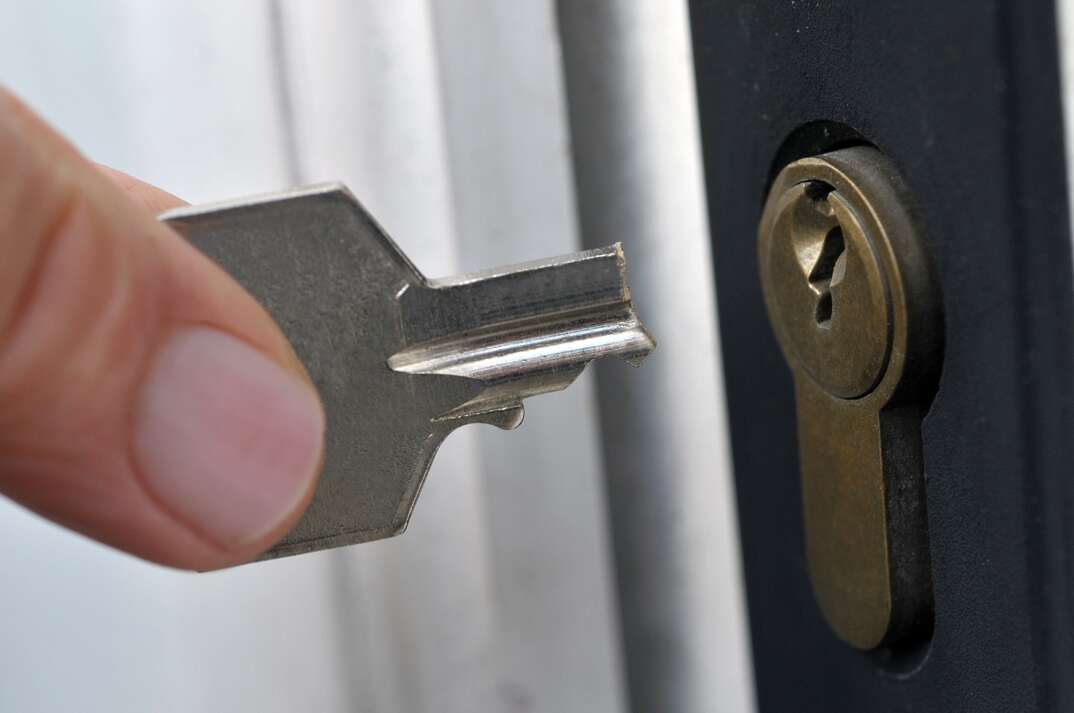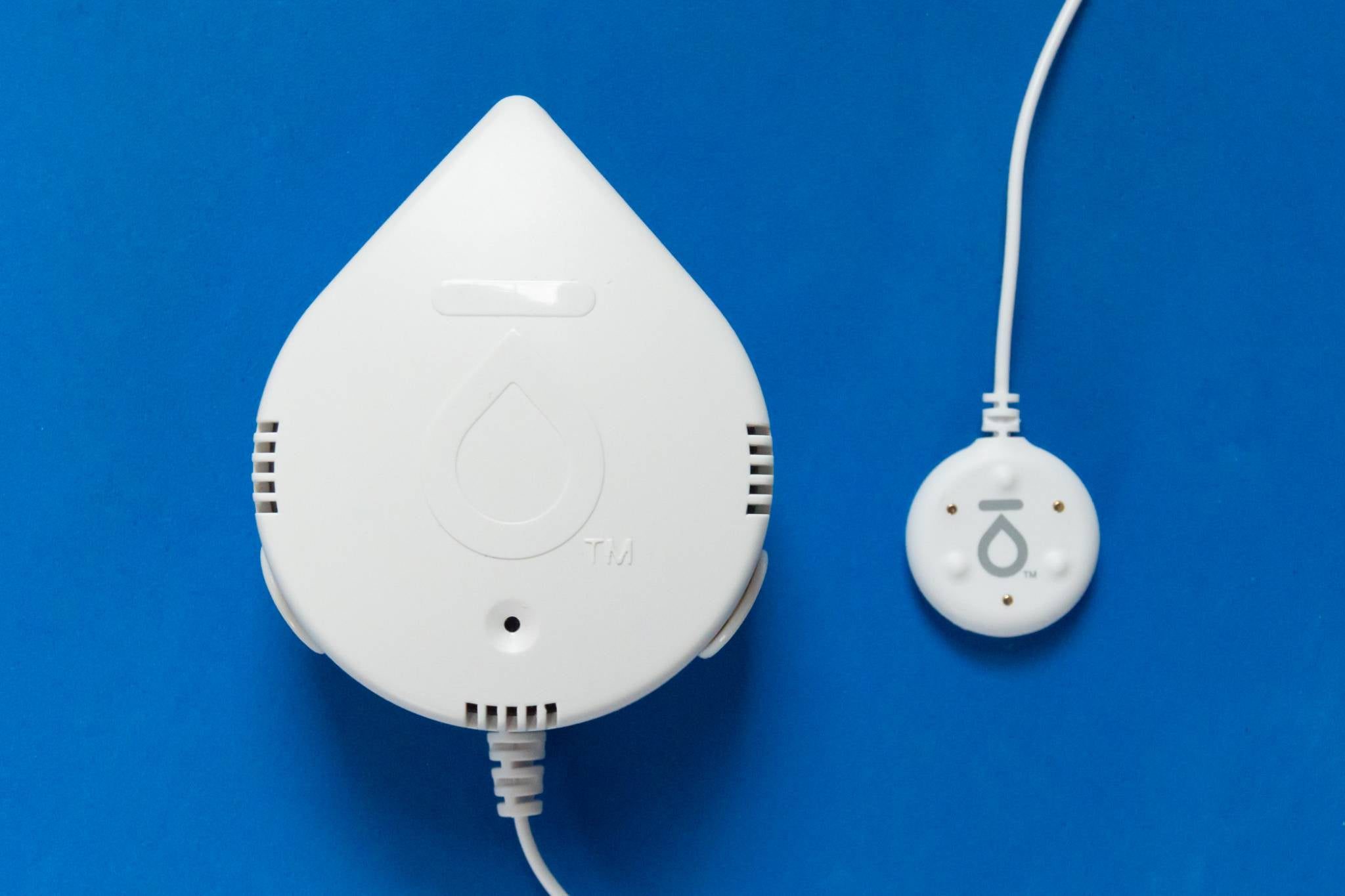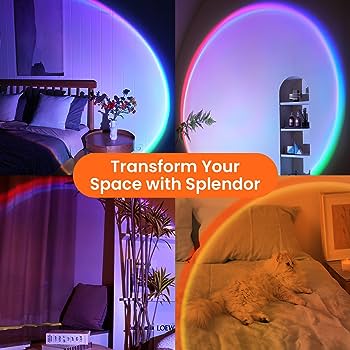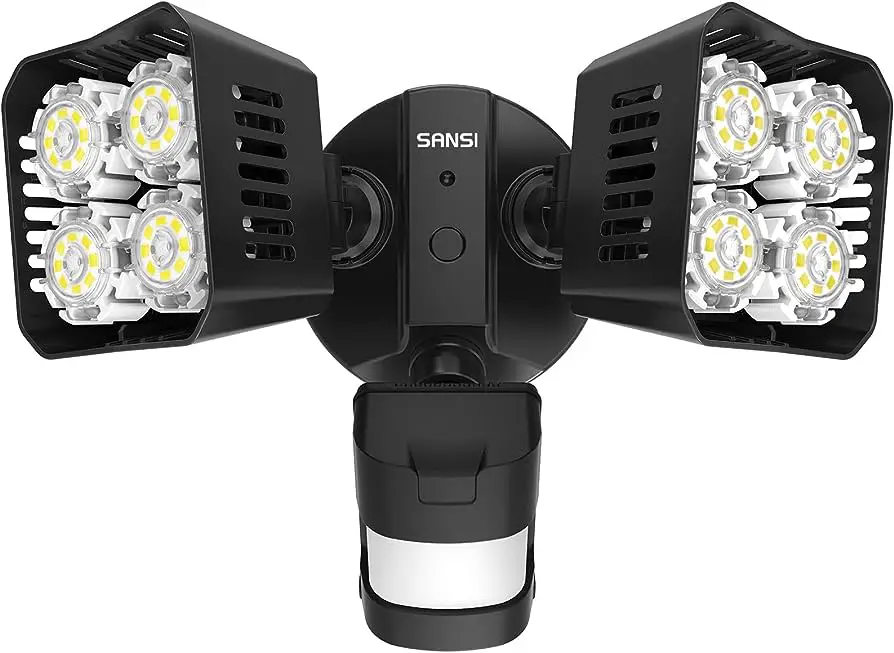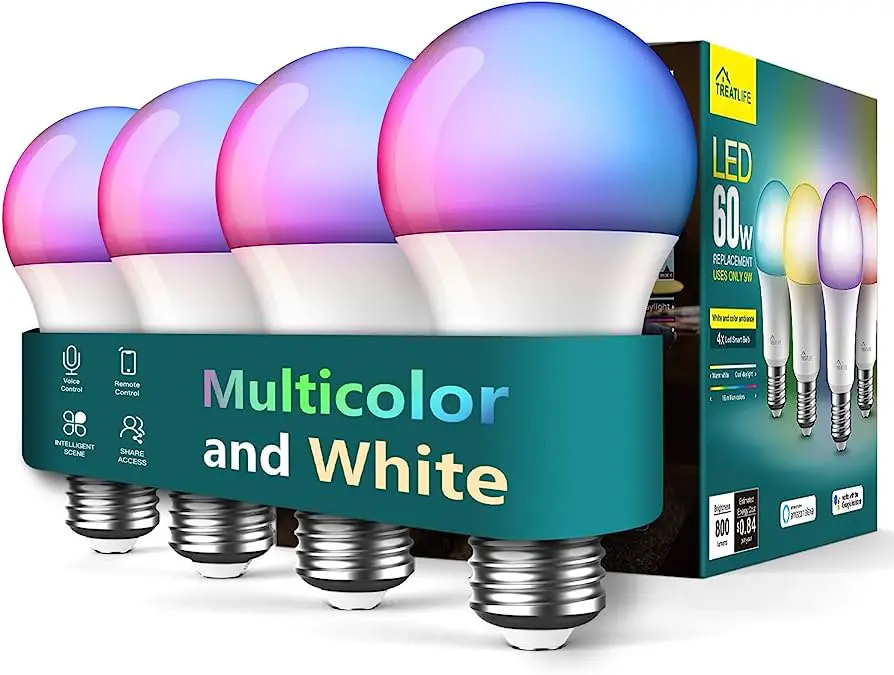Motion Sensor Security Light: Illuminate Your Path to Safety
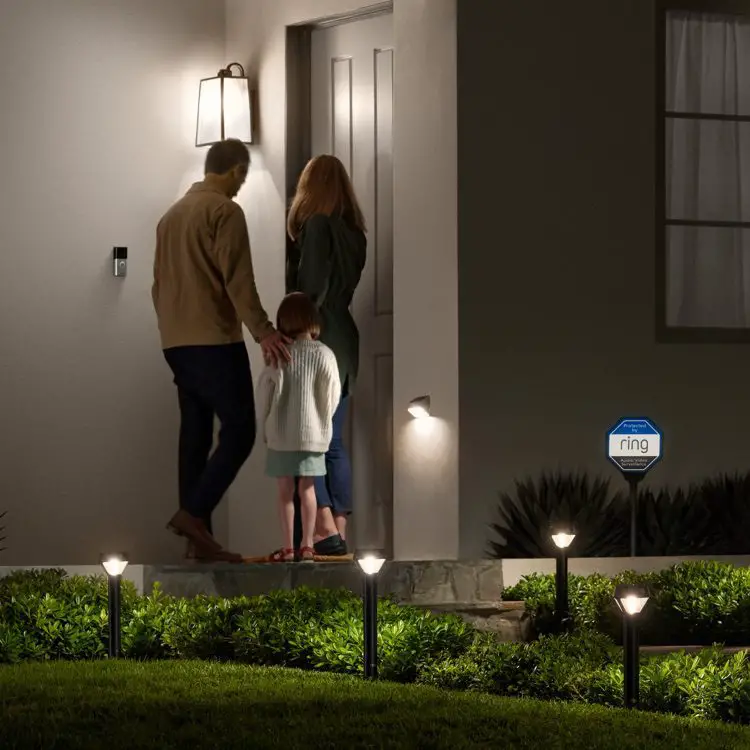
Motion sensor security lights are a type of lighting system that automatically turns on when it detects motion nearby. These lights provide enhanced security by illuminating dark areas and deterring potential intruders.
By using motion sensors, these lights conserve energy and reduce electricity costs since they only activate when needed. Additionally, they offer convenience and peace of mind by providing a well-lit environment whenever someone approaches the area. Whether used for residential or commercial purposes, motion sensor security lights are a practical and effective solution for improving safety and security.
They are easy to install and can be adjusted to meet specific needs and preferences.
Understanding The Importance Of Motion Sensor Security Lights
Motion sensor security lights play a crucial role in safeguarding your property by detecting any movement and instantly illuminating the area. These lights offer enhanced security and act as a deterrent to potential intruders, making them an essential addition to your home or business.
Ensure Your Safety And Security With Motion Sensor Security Lights
Motion sensor security lights are an invaluable addition to any home or property, providing a heightened level of safety and security. These innovative lights use advanced technology to detect motion in their surrounding areas and instantly illuminate the space, alerting homeowners to potential intruders or unexpected visitors.
Understanding the importance of motion sensor security lights can help you make informed decisions when it comes to enhancing the security of your property.
How Motion Sensor Security Lights Work
Motion sensor security lights operate on a simple but effective principle. Here’s how they work:
- Motion detection: Equipped with built-in motion sensors, these lights continuously monitor their surroundings for any movement or activity. Once activated, they trigger the next step in the process.
- Instant illumination: When motion is detected, motion sensor security lights activate and flood the area with bright light. This not only alerts homeowners to the presence of someone or something in the vicinity but also deters potential intruders by exposing their actions.
- Adjustable settings: Many motion sensor security lights allow adjustable settings to cater to individual preferences. You can customize the range of detection, duration of illumination, and sensitivity based on your specific security needs.
Key Benefits Of Installing Motion Sensor Security Lights
Installing motion sensor security lights offers a wide range of benefits, making them an essential component of any security system. Here are some of the key advantages:
- Enhanced safety: Motion sensor security lights help navigate safely in dimly lit areas, reducing the risk of accidents or tripping hazards. They are particularly useful for outdoor spaces, driveways, and entryways where visibility may be compromised during the night.
- Protection against intruders: The sudden illumination provided by motion sensor security lights startles potential intruders and draws attention to their presence. This dissuades trespassers, burglars, and vandals, enhancing the overall security of your property.
- Energy efficiency: Motion sensor security lights are designed to activate only when motion is detected, ensuring that they are not wasting energy by staying on unnecessarily. This energy-saving feature reduces electricity consumption and contributes to a greener, more sustainable environment.
- Convenience and versatility: With motion sensor security lights, there is no need to remember to turn the lights on or off manually. They automatically illuminate the area when needed, providing convenience and peace of mind. These lights can be installed in various areas around your property, including outdoor spaces, garages, and stairways.
- Cost-effective security solution: Motion sensor security lights offer an affordable security solution compared to other sophisticated systems. They provide an added layer of protection without the need for complex wiring or extensive installation processes.
By understanding the importance of motion sensor security lights and their benefits, you can take proactive measures to enhance the safety and security of your home or property. Invest in these innovative lights and enjoy the peace of mind that comes with knowing your surroundings are well-protected.

Credit: www.amazon.com
Factors To Consider When Choosing Motion Sensor Security Lights
Factors to consider when choosing motion sensor security lights include the detection range, sensitivity, power source, weather resistance, installation options, and cost-effectiveness. These factors help ensure optimal security and convenience for your home or business.
Motion sensor security lights are an excellent addition to any home or business, providing an added layer of protection and peace of mind. However, not all motion sensor security lights are created equal, and there are several factors to consider when choosing the right one for your needs.
In this section, we will explore the different types of motion sensors, determining the appropriate coverage range, and energy efficiency and brightness considerations.
Different Types Of Motion Sensors:
- Passive infrared (PIR) sensors: These sensors detect changes in infrared radiation, such as heat, and are the most common type of motion sensors used in security lights. They are effective in detecting human movement but may be triggered by other heat sources like pets or passing cars.
- Dual technology sensors: These sensors use a combination of PIR and microwave technology to reduce false alarms. The PIR sensor detects heat, while the microwave sensor detects movement. Both sensors must be triggered simultaneously for the light to activate.
- Active sensors: These sensors emit pulses of infrared or microwave radiation and measure the reflection off nearby objects. They are highly accurate in detecting movement but are more expensive compared to PIR or dual technology sensors.
Determining The Appropriate Coverage Range:
- Consider the size of the area you want to cover with the motion sensor security light. Different lights have varying coverage ranges, so choose one that suits your needs.
- Look for lights with adjustable sensitivity and range settings, allowing you to customize the coverage area. This flexibility ensures that you can tailor the sensor’s detection range to your specific requirements.
- Take into account the mounting height of the security light. Higher mounting heights may require lights with a wider coverage range to effectively detect motion.
Energy Efficiency And Brightness Considerations:
- Opt for LED motion sensor security lights, as they are energy-efficient and have a longer lifespan compared to traditional bulbs. LEDs consume less power while providing bright illumination, resulting in reduced electricity bills and maintenance costs.
- Look for lights with adjustable brightness settings. Having the ability to adjust the brightness level allows you to conserve energy by using a lower brightness during times when maximum illumination is not required.
- Check for energy-saving features such as auto-off timers or dimming functions when no motion is detected. These features help further reduce energy consumption by ensuring the light is only activated when necessary.
When choosing motion sensor security lights, it’s important to consider the different types of motion sensors available, determine the appropriate coverage range, and take into account energy efficiency and brightness considerations. By understanding these factors and making an informed decision, you can enhance the security and convenience of your property.
So, go ahead and choose the motion sensor security light that best suits your needs and enjoy the peace of mind it brings.
Installation And Placement Tips For Motion Sensor Security Lights
Get the most out of your motion sensor security lights with these helpful installation and placement tips. Ensure optimal coverage and effectiveness by following these expert guidelines.
Motion sensor security lights are an essential addition to any home or commercial property, providing enhanced safety and security. When installed and placed correctly, these lights can effectively deter trespassers and provide you with peace of mind. To help you make the most of your motion sensor security lights, we have compiled a list of installation and placement tips.
Read on to discover the best practices, ideal locations, and common installation mistakes to avoid.
Best Practices For Installing Motion Sensor Security Lights:
- Choose a suitable mounting height: Install your motion sensor security lights at a height that allows them to effectively detect motion and illuminate the targeted area.
- Position the sensor correctly: Ensure that the sensor is aimed in the desired direction, avoiding obstructions such as trees or walls that may interfere with its functionality.
- Follow the manufacturer’s instructions: Each motion sensor security light may have specific installation guidelines provided by the manufacturer. Make sure to read and follow these instructions for optimal performance.
- Test the range and sensitivity: Once installed, perform a test to ensure that the motion sensor’s range and sensitivity are set appropriately. This will help avoid false alarms or missed detections.
- Use a professional if needed: If you are unsure about the installation process or lack the necessary tools, it is advisable to seek professional assistance. They can ensure a correct and safe installation.
Ideal Locations For Placing Motion Sensor Security Lights:
- Entry points: Install motion sensor security lights near entry points such as doors, windows, and garage doors. This will effectively deter potential intruders and provide visibility when entering or exiting your property.
- Dark areas: Identify areas of your property that are poorly lit or prone to shadows. Placing motion sensor security lights in these areas will help improve visibility and reduce the likelihood of unwanted activity.
- Outdoor pathways: Illuminate outdoor pathways and walkways with motion sensor security lights. This will enhance safety for you and your guests by providing well-lit paths at night.
- Backyard and garden: Ensure your backyard and garden are well-lit by strategically placing motion sensor security lights. This will deter burglars and make it harder for them to hide in the shadows.
Avoiding Common Installation Mistakes:
- Poor positioning: Avoid installing motion sensor security lights in areas where pets or wildlife may trigger false alarms frequently. Carefully consider the direction and range of the sensor to minimize these instances.
- Insufficient coverage: Avoid spacing the lights too far apart, as this may create dark spots in between where motion may go undetected. Optimal coverage is crucial for a comprehensive security solution.
- Obstructed sensors: Ensure that the motion sensor has a clear line of sight. Remove any objects such as branches, decorations, or plants that may obstruct the sensor’s field of view.
- Failure to test and adjust: After installation, it is important to test the lights’ functionality and adjust the settings if necessary. Regularly check and maintain the lights to ensure they are in proper working order.
By following these best practices for installation, strategically placing the lights in ideal locations, and avoiding common mistakes, you can maximize the effectiveness of motion sensor security lights in safeguarding your property. Remember to consult the manufacturer’s instructions and seek professional assistance if needed for a seamless installation process.
Stay safe!
Understanding Different Types Of Motion Sensor Security Lights
Motion sensor security lights are an essential part of any security system. By understanding the different types of motion sensors available, you can choose the right one to keep your property safe.
Motion sensor security lights are an essential component of any home or business security system. They provide an added layer of protection by detecting movement and illuminating the surrounding area. However, not all motion sensor security lights are created equal.
In this section, we will delve into the different types of motion sensor security lights, discussing their features and applications.
Differentiating Between Floodlights, Spotlights, And Wall-Mounted Lights
When it comes to motion sensor security lights, there are three main types to consider: floodlights, spotlights, and wall-mounted lights. Each type serves a distinct purpose and has unique characteristics. Let’s explore their differences:
- Floodlights: Floodlights emit a wide beam of light, covering a large area. They are ideal for illuminating expansive spaces such as driveways, gardens, or parking lots. Floodlights are typically bright and provide excellent visibility, making them a popular choice for outdoor security.
- Spotlights: As the name suggests, spotlights emit a more focused, concentrated beam of light. They are designed to highlight specific areas or objects, such as entryways or signage. Spotlights offer versatility and precision, allowing you to direct the light exactly where it’s needed.
- Wall-mounted lights: Wall-mounted motion sensor security lights are installed directly on the exterior walls of buildings. They provide both security and aesthetic appeal, enhancing the overall look of your property. Wall-mounted lights are especially suitable for illuminating entry points or patios.
Outdoor Vs. Indoor Motion Sensor Security Lights
Motion sensor security lights can be installed both outdoors and indoors, depending on your specific needs. Let’s take a closer look at the differences between outdoor and indoor options:
- Outdoor: Outdoor motion sensor security lights are designed to withstand various weather conditions. They are typically built with robust materials and have a higher degree of waterproofing. Outdoor lights are commonly used to deter intruders and illuminate outdoor spaces, ensuring visibility and safety during nighttime.
- Indoor: Indoor motion sensor security lights are primarily used for enhancing safety and convenience within buildings. They are often installed in hallways, staircases, or indoor garages to automatically illuminate the area when motion is detected. Indoor lights provide added security by ensuring well-lit pathways and minimizing the risk of accidents.
Choosing The Right Light Intensity And Color Temperature
When selecting motion sensor security lights, it’s essential to consider the appropriate light intensity and color temperature. These factors can make a significant difference in the effectiveness and ambiance of the lighting. Here are some key considerations:
- Light intensity: The light intensity of a security light determines how bright it will shine. Higher light intensity is suitable for larger outdoor areas or spaces that require greater visibility. Lower light intensity may be more desirable for indoor settings or areas where a softer, ambient light is preferred.
- Color temperature: Color temperature refers to the perceived warmth or coolness of the light emitted by a security light. Warmer, yellowish tones (lower color temperature) create a cozy and inviting atmosphere, while cooler, bluish tones (higher color temperature) appear brighter and more energizing. Consider the desired mood and functionality of the space when choosing the appropriate color temperature.
Understanding the different types of motion sensor security lights is crucial for selecting the right lighting solution for your needs. Whether you opt for floodlights, spotlights, or wall-mounted lights, knowing their distinctions can help you make an informed decision. Additionally, considering the indoor or outdoor application and choosing the appropriate light intensity and color temperature will contribute to an effective and visually appealing security lighting setup.
So, assess your requirements, explore the options available, and invest in motion sensor security lights that provide both safety and peace of mind.
Factors To Consider When Choosing Motion Sensor Security Light
When selecting a motion sensor security light, it is essential to consider factors such as detection range, sensitivity, brightness, and installation method. These elements play a crucial role in ensuring optimal security and functionality for your outdoor space.
Motion sensor security lights are an effective way to enhance the safety and security of your property. Whether you’re looking to deter potential intruders or simply want to illuminate dark areas, it’s important to choose the right motion sensor security light for your needs.
Here are some key factors to consider when making your selection:
Required Brightness For The Intended Area:
- Determine the level of brightness required for the area you want to illuminate: It’s essential to consider the size and purpose of the space you intend to light up. For areas that require high visibility, such as driveways or entrances, opt for motion sensor security lights with higher lumen ratings. This ensures sufficient brightness to effectively illuminate the surroundings.
- Choose adjustable brightness settings: Look for motion sensor security lights that offer adjustable brightness settings. This feature allows you to customize the intensity of the light according to your preferences and the specific requirements of the area.
- Consider the detection range: Different motion sensor security lights come with varying detection ranges. If you need to cover a larger area, choose lights with a wider range to maximize the effectiveness of the motion detection.
Adjustable Settings And Customization Options:
- Opt for lights with adjustable sensitivity: Motion sensor security lights with adjustable sensitivity settings allow you to fine-tune the detection capability according to your specific needs. This prevents unnecessary activation caused by small animals or passing cars.
- Look for adjustable time settings: It’s essential to choose lights that offer adjustable time settings for the light to remain on after motion detection. This feature ensures that the light stays on for an appropriate duration, providing adequate illumination when needed.
- Consider adjustable angles: Lights with adjustable angles provide flexibility in directing the light precisely where it is required. This allows you to cover multiple areas and adjust the sensor’s field of view effectively.
Compatibility With Existing Lighting Systems:
- Determine compatibility with existing lighting systems: If you already have existing lighting systems installed, ensure that the motion sensor security light you choose is compatible with them. This will allow for easy integration and enhance the functionality of your overall lighting setup.
- Consider power source and wiring requirements: Depending on your preferences and the availability of power sources, choose between hardwired or battery-powered motion sensor security lights. Ensure that the chosen option aligns with your existing setup and wiring capabilities.
- Look for additional features to enhance compatibility: Some motion sensor security lights come with features like remote control operation or compatibility with smart home systems. These additional features provide convenience and can integrate seamlessly with your existing setup.
Selecting the right motion sensor security light requires careful consideration of multiple factors, such as required brightness, adjustable settings, and compatibility with existing lighting systems. By evaluating these aspects, you can make an informed decision that meets your specific security and lighting needs.
Evaluating Additional Features And Technologies
Evaluate the added features and technologies of motion sensor security lights for enhanced protection and convenience. Discover the benefits and options they offer for effective home security and effortless lighting control.
Motion Sensor Security Light:
With advancements in technology, motion sensor security lights have become more sophisticated, offering a range of additional features and technologies that enhance their functionality. In this section, we’ll explore two key aspects to consider when evaluating motion sensor security lights: dusk-to-dawn sensors and automatic on/off functionality, as well as weather resistance and durability.
We’ll also discuss the integration of these lights with smart home systems.
Dusk-To-Dawn Sensors And Automatic On/Off Functionality:
- Dusk-to-dawn sensors: These sensors detect the ambient light levels and automatically adjust the security light accordingly. They ensure that the light only turns on when it is dark outside, conserving energy during the day.
- Automatic on/off functionality: Motion sensor security lights equipped with automatic on/off functionality detect movement within their range and turn on the light accordingly. Once the movement ceases, the light will automatically turn off after a specific duration, contributing to energy efficiency.
Weather Resistance And Durability:
- Weather resistance: Motion sensor security lights that are weather resistant can withstand various outdoor elements, such as rain, snow, or extreme temperatures. Look for lights with an IP65 or higher rating, as this indicates their ability to withstand harsh weather conditions.
- Durability: Consider motion sensor security lights made from durable materials such as high-quality plastic or metal. Lights with a durable construction are less likely to deteriorate over time, ensuring long-lasting performance.
Integration With Smart Home Systems:
- Smart home compatibility: Many motion sensor security lights can be integrated with popular smart home systems such as Amazon Alexa, Google Assistant, or Apple HomeKit. This allows you to control the lights using voice commands or smartphone apps, providing convenient access and customization options.
- Automation and customization: By connecting your motion sensor security lights to a smart home system, you can automate their behavior based on your preferences. For instance, you can create schedules to turn the lights on and off at specific times, or even sync them with other smart devices in your home for enhanced security and efficiency.
When considering motion sensor security lights, it’s essential to evaluate additional features and technologies. Dusk-to-dawn sensors and automatic on/off functionality provide convenience and energy efficiency, while weather resistance and durability ensure long-lasting performance. Integration with smart home systems adds a layer of customization and control for a truly connected and secure home environment.
Step-By-Step Guide To Installing Motion Sensor Security Lights
Discover how to easily install motion sensor security lights with our step-by-step guide. Enhance your home’s security by following these simple instructions for a safe and efficient installation process.
Motion sensor security lights are a great investment for your home, providing an added layer of safety and security. Whether you want to illuminate your driveway, garden, or any other outdoor space, installing motion sensor security lights can deter potential intruders and provide you with peace of mind.
Here is a step-by-step guide to help you through the process:
Preparing The Installation Area:
- Choose the ideal location: Find the perfect spot for your motion sensor security light, keeping in mind areas where you need adequate lighting and where the sensor can detect motion effectively.
- Gather the necessary tools: Before starting the installation, ensure that you have the required tools such as a drill, screwdriver, wire stripper, and electrical tape.
Wiring And Connecting The Motion Sensor Light:
- Turn off the power: Safety first! Locate the electrical panel and switch off the power to the area where you’ll be working.
- Mount the fixture: Using a drill and screws, securely attach the motion sensor light to the desired surface. Make sure it is positioned correctly for optimal detection.
- Connect the wires: Carefully follow the manufacturer’s instructions to connect the black wire to the black wire and the white wire to the white wire. Use wire nuts to secure the connections.
- Grounding: If necessary, connect the green or bare copper grounding wire to the grounding screw on the fixture or electrical box.
Adjusting Settings And Testing Functionality:
- Adjust the sensitivity and range: Most motion sensor lights offer adjustable sensitivity and range settings. Refer to the instruction manual to customize these settings to your preference.
- Set the duration of illumination: Determine how long the light should stay on after motion is detected. This can be adjusted according to your needs.
- Test the functionality: Now that everything is wired and adjusted, restore power to the area and test the motion sensor light. Walk within the detection range to ensure that it activates as expected.
- Fine-tune the positioning: If needed, make any necessary adjustments to the sensor’s position and angle to achieve optimal coverage.
Installing motion sensor security lights can provide you with a heightened sense of security and convenience. Following this step-by-step guide will help you successfully install your own motion sensor security lights and enjoy the benefits they offer. So, why wait?
Enhance the safety of your home today!
Regular Maintenance And Troubleshooting Tips
Keep your motion sensor security light functioning properly with regular maintenance and troubleshooting tips. Discover how to ensure optimal performance and address common issues that may arise.
Cleaning And Inspecting The Motion Sensor Light:
Regular maintenance of your motion sensor security lights is crucial in ensuring their optimal performance. Here are some tips to clean and inspect your motion sensor light:
- Remove dirt and debris: Clear any dirt or debris that may have accumulated on the light fixture and sensor using a soft, dry cloth or a brush. Ensure that the sensor is free from any obstructions that could hinder its motion detection.
- Check for wear and tear: Inspect the light fixture for any signs of wear and tear, such as cracks or loose connections. Make sure the housing is securely attached and that all screws and mounting brackets are in place.
- Clean the sensor lens: Use a clean, lint-free cloth or a cotton swab dipped in a mild detergent solution to gently wipe the sensor lens. Avoid using abrasive cleaners or harsh chemicals, as they can damage the lens.
- Test the sensitivity and range: Adjust the sensitivity and range settings of the motion sensor according to your preferences. Walk in front of the light to ensure it detects your movement accurately.
- Verify the direction of the sensor: Ensure that the sensor is properly aligned to cover the desired area. Make necessary adjustments if needed.
Addressing Common Issues And Malfunctions:
Motion sensor security lights may experience common issues and malfunctions over time. Here are some troubleshooting tips to address these problems:
- Dim or flickering lights: Check if the light bulbs are securely screwed into the fixture. Replace any damaged or burnt-out bulbs with new ones of the same wattage. If the issue persists, inspect the wiring for any loose connections or damaged wires.
- False alarms: Adjust the sensitivity settings to minimize false alarms triggered by moving objects like trees or animals. Ensure that the sensor is not facing any moving objects directly.
- Inconsistent detection: Clean the sensor lens and ensure there are no obstructions blocking its field of view. Adjust the range and sensitivity settings to achieve optimal detection.
- Unresponsive lights: Check the power supply to ensure the light is receiving electricity. If the power source is fine, inspect the wiring and connections for any faults.
- Interference from other devices: Keep the motion sensor light away from other devices that emit infrared radiation, such as air conditioners or heating units, as they may interfere with its functioning.
Extending The Lifespan Of Motion Sensor Security Lights:
By following these tips, you can prolong the lifespan of your motion sensor security lights:
- Choose quality products: Invest in high-quality motion sensor lights from reputable brands, as they are more likely to be durable and provide better performance.
- Protect against weather elements: Ensure that the light fixtures and wiring are properly sealed to prevent water damage. Consider installing a weatherproof cover for added protection.
- Conserve energy: Opt for LED bulbs, as they are energy-efficient and have a longer lifespan compared to traditional incandescent bulbs.
- Regularly inspect and clean: Perform routine inspections and cleaning as mentioned earlier to keep the lights in optimal condition and prevent debris from affecting their performance.
- Replace faulty components: If you notice any issues with the light fixture or sensor that cannot be resolved through troubleshooting, consider replacing the faulty components promptly.
Remember that regular maintenance and timely troubleshooting can help you maximize the effectiveness and longevity of your motion sensor security lights.
Enhancing The Effectiveness Of Motion Sensor Security Lights
Enhance the effectiveness of motion sensor security lights with these practical tips and tricks to optimize your home’s security. Discover how to maximize their functionality and ensure your safety with expert advice.
Motion sensor security lights are an essential addition to any home or property, providing increased safety and peace of mind. These lights are designed to activate when motion is detected, effectively deterring potential intruders and illuminating dark areas. However, there are several ways to enhance the effectiveness of motion sensor security lights, ensuring maximum coverage and optimal performance.
In this section, we will explore various strategies to make the most of your lighting system and boost your overall security measures.
Combining Motion Sensor Lights With Other Security Measures:
- Installing security cameras: Pairing motion sensor lights with surveillance cameras adds an extra layer of protection. The lights will not only trigger when motion is detected, but the cameras will also record the activity, providing visual evidence in case of an incident.
- Integrating an alarm system: By connecting your motion sensor lights to an alarm system, you can create a comprehensive security network. When the lights detect motion, they will not only illuminate the area but also activate the alarm, alerting both you and your neighbors to potential threats.
- Implementing smart home technology: Embracing smart home automation allows you to synchronize your motion sensor lights with other devices such as door/window sensors or smart locks. This integration ensures a complete security system that can be controlled remotely via smartphone apps or voice commands.
Maximizing The Coverage And Effectiveness Of Your Lighting System:
- Strategic placement: Positioning your motion sensor lights in optimal locations is crucial for maximizing coverage. Install them near entry points, such as doors and windows, and areas with limited visibility, like dark corners or pathways.
- Adjusting the sensor angle: Fine-tuning the sensor angle is essential to avoid false triggers while capturing movement effectively. Experiment with different angles to ensure the lights activate only when necessary, minimizing unnecessary activations caused by stray animals or passing cars.
- Utilizing adjustable sensitivity: Most motion sensor lights offer adjustable sensitivity settings. Find the right balance by testing different sensitivity levels to avoid under- or over-activation. This adjustment ensures your lights respond adequately to intruders while disregarding common environmental factors.
Fine-Tuning The Settings For Optimal Performance:
- Tailoring the duration of illumination: Motion sensor lights often have customizable duration settings that control how long the lights stay illuminated after motion is detected. Adjust this duration according to your preference and specific needs, ensuring sufficient time for activities like entering or exiting your property.
- Tweaking the light intensity: Some motion sensor lights allow you to adjust the brightness levels. Your aim should be to strike a balance between providing adequate visibility and minimizing light pollution. Experiment with different intensity levels to find what works best for you.
- Regular maintenance and testing: To ensure optimal performance, regularly inspect your motion sensor lights for any obstructions or damage. Clean the sensors and bulbs to remove dirt and debris that may impact functionality. Additionally, periodically test the lights’ performance by triggering the motion sensors manually.
By combining motion sensor lights with other security measures, maximizing coverage, and fine-tuning the settings, you can significantly enhance the effectiveness of your motion sensor security lights. These strategies will not only deter potential intruders but also provide you with added peace of mind, knowing that your property is well-protected.
Frequently Asked Questions For Motion Sensor Security Light
What Are The Disadvantages Of Motion Sensor Lights?
Motion sensor lights have a few drawbacks: false triggers may occur, they may not detect slow movements, and they might be affected by weather conditions.
Are Motion Sensor Lights Good For Security?
Yes, motion sensor lights are good for security as they detect movement, alerting you to potential intruders.
What Is The Best Security Motion Light?
The best security motion light combines advanced features, superior durability, and reliable performance for optimal safety.
Do Motion Lights Scare Raccoons?
Yes, motion lights can scare raccoons away from your property due to their sudden activation and bright light.
Conclusion
Motion sensor security lights are an essential addition to any home or business’s security system. They provide a reliable and effective way to deter potential intruders and keep your property safe. These lights work by detecting motion within their range and automatically illuminating the area, alerting you to any activity.
Not only do they act as a deterrent, but they also help to enhance visibility and provide added convenience. With advancements in technology, motion sensor security lights are now more energy-efficient and durable than ever before, making them a cost-effective solution in the long run.
Whether you are looking to protect your home or business, investing in motion sensor security lights is a wise choice that offers peace of mind and enhanced security. Upgrade your security system today and enjoy the benefits that motion sensor security lights provide.

